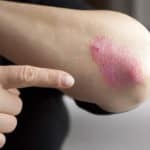Vitamin A: Hepatitis C Foe or Ally?
Listed as an ingredient in most multivitamins, Vitamin A rarely receives much attention. However, those with chronic Hepatitis C now have reason to keep themselves abreast of scientific developments involving this vitamin. Besides being a healthful substance known to assist vision, Vitamin A may also have a place in Hepatitis C therapy. Vitamin A could prove itself to be an ideal adjunct to interferon-based, antiviral therapy; however, this vitamin’s potential for liver toxicity must be simultaneously evaluated.
About Vitamin A
Identified in 1913, Vitamin A was the first fat-soluble vitamin to be discovered. Also known as retinol, Vitamin A has also been called the “anti-infective” vitamin due to its role in supporting the immune system. Vitamin A is derived from two sources: preformed retinoids and provitamin carotenoids.
- Retinoids – Known as preformed Vitamin A, retinoids are the active forms of Vitamin A. They are found in animal sources like liver, kidney, eggs and dairy.
- Carotenoids – Carotenoids are plant pigments, responsible for the red, orange and yellow color of fruits and vegetables (eg: carrots, apricots, squash and sweet potatoes). The body can convert certain members of the carotenoid family, including beta-carotene, alpha-carotene and gamma-carotene, into vitamin A. These carotenoids are referred to as provitamin A.
Vitamin A is believed to have two primary health benefits:
- Preserving and improving eyesight – The human retina contains four kinds of photopigments that store vitamin A compounds. Vitamin A participates in the synthesis of rhodopsin, which is necessary for seeing in low-light conditions and night vision.
- Protecting the body from viral infections – Vitamin A stimulates several immune system activities. One way Vitamin A participates in immunity is via enhancement of white blood cell function. Upon enhancing the function of white blood cells, the body’s response of antibodies to antigens is increased, thus helping defend against viruses.
The Recommended Daily Allowance (RDA) for Vitamin A has been established by the U.S. Institute of Medicine of the National Academy of Sciences. In International Units (IU), the recommendations for Vitamin A intake are:
- 3,000 IU per day for men
- 2,300 IU per day for women
- 2,600 IU per day for pregnant women 19 years and older
- 4,300 IU per day for lactating women 19 years and older
Although considered to be nontoxic at the recommended dosage levels, excessive quantities of Vitamin A are believed to be toxic to the liver. Vitamin A toxicity may be acute or chronic and can elicit a wide range of symptoms. In adults, a few of the more prominent problems may include:
- Blurred vision or dizziness
- Bone pain
- Fatigue or drowsiness
- Headache
- Increased intracranial pressure
- Nausea or vomiting
- Skin or hair changes
- Kidney or liver damage
New Research for Hepatitis C
Individuals with cirrhosis (advanced liver disease) have long been cautioned to avoid Vitamin A dosages exceeding 5,000 IU per day. However, not all in the medical field agree. Led by Shuichi Sato, MD, of Shimane University in Izumo, Japan, researchers have identified a potential role for large doses of Vitamin A in Hepatitis C antiviral therapy.
The currently approved treatment for Hepatitis C is a combination of pegylated interferon and ribavirin, but it is less than 50 percent effective. To increase this treatment’s effectiveness, Sato and colleagues added megadoses of Vitamin A to participants’ Hepatitis C therapy. They found that receiving 30,000 IU of Vitamin A per day alongside pegylated interferon and ribavirin:
- increased treatment effectiveness from 42.9 percent (without Vitamin A) to 61.7 percent (with Vitamin A)
- boosted early virologic response rates after 12 weeks from 40 percent (without Vitamin A) to 70 percent (with Vitamin A)
Despite the very high doses of Vitamin A tested, Sato reported that no adverse effects were seen. At a press conference prior to his formal presentation of this study at Digestive Disease Week, he even said, “There is little or no risk in a high dose of Vitamin A.”
The Hepatitis C community would love to believe in Sato’s confidence that megadoses of Vitamin A are nontoxic for those with liver disease. In the name of safety, more in-depth trials are required before daily Vitamin A dosages above 5,000 IU are advised. Meanwhile, experts claim that there is no threat of toxicity from consuming naturally occurring provitamin carotenoids. Until more is known about the potential toxicity of Vitamin A during Hepatitis C treatment, eating lots of carotenoid-containing produce during treatment is the closest you can safely get to reproducing the favorable results from Sato’s recent study.
References:
http://www.hcvadvocate.org/hcsp/articles/Herrera.html, Cirrhosis in Chronic Hepatitis C Infection, Jorge L. Herrera, MD, Retrieved July 18, 2010, Hepatitis C Support Project, 2010.
http://www.mayoclinic.com/health/vitamin-a/NS_patient-vitamina, Vitamin A (retinol), Retrieved July 16, 2010, Mayo Foundation for Medical Education and Research, 2010.
http://www.medpagetoday.com/MeetingCoverage/DDW/19939, DDW: Vitamin A Boosts Response in HCV Treatment, John Gever, Retrieved July 16, 2010, MedPage Today LLC, 2010.
http://www.ncbi.nlm.nih.gov/pubmed/20104263, Retinol supplements antiviral action of interferon in patients with chronic hepatitis C: a prospective pilot study, Kohge N, et al, Retrieved July 16, 2010, Journal of Clinical Biochemistry and Nutrition, January 2010.
http://www.whfoods.com/genpage.php?tname=nutrient&dbid=106, Vitamin A, Retrieved July 18, 2010, The George Mateljan Foundation, 2010.







